My home is my castle…
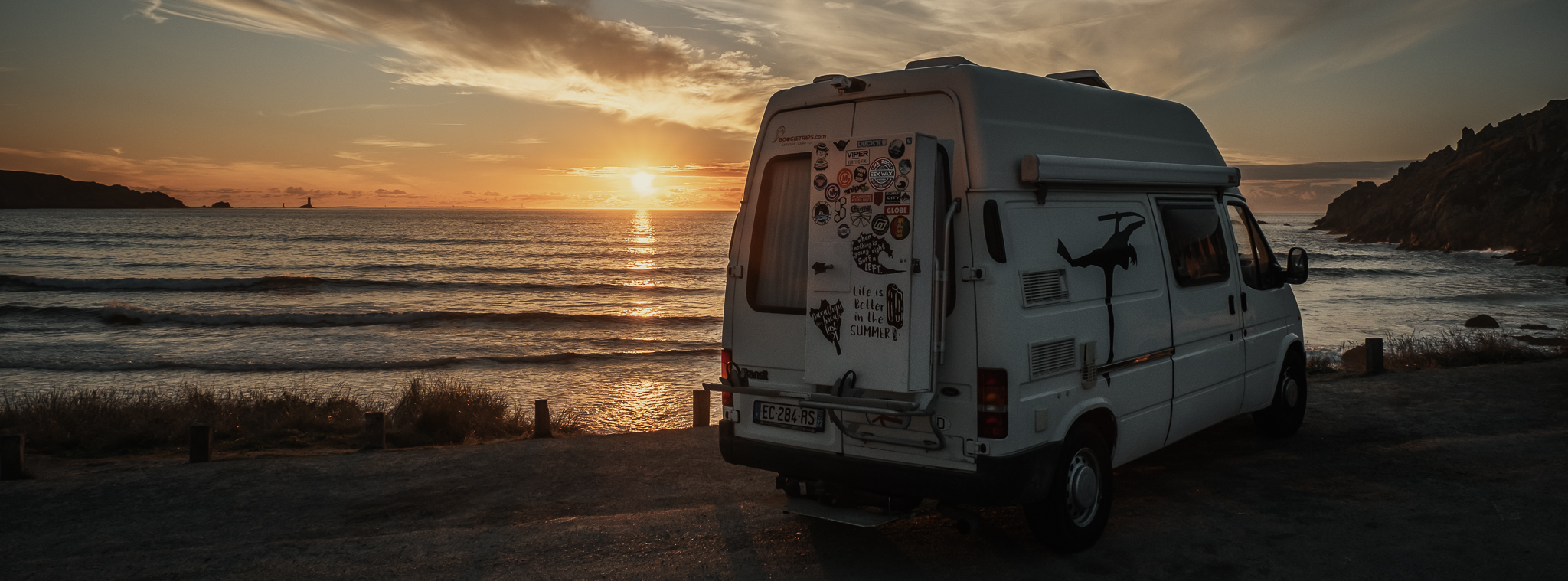
... and that is mobile and offers rather limited space. But bed, kitchen and toilet are always with me and I can move upright.
It is a Ford Transit from 1998. It has an apparently rather rare expansion of Rimor as a panel truck. As a result, the maneuverability and properties of a normal van have been retained and the vehicle does not look like a bulky mobile home. Furniture and equipment offer me the greatest possible independence so that I can do without a supply station or campsite for a few days.
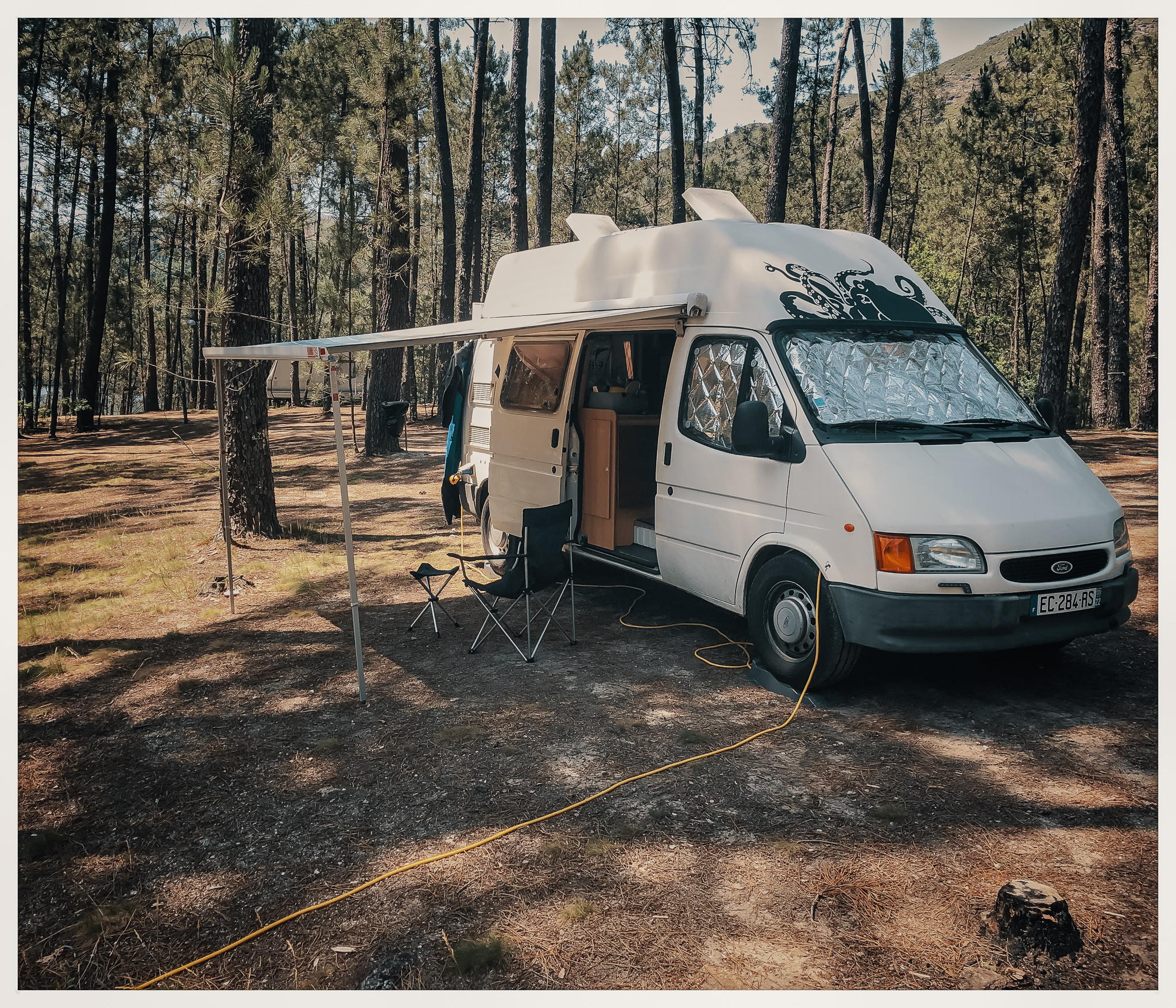
At the rear of the bike rack is a board box in which I stowed my two bodyboards.

A surfboard holder is also mounted on my bike. So I can comfortably go to surf spots a little further away from the parking space with my equipment.

Sometimes the 100 HP of the diesel engine is a little weak on the chest, especially when the roads begin to rise. But he drove me along the coast and into the mountains without a breakdown.
In addition to the cozy original interior, I made a few customizations. The smartphone plays a crucial role in the set-up for the driver's cab. I navigate with the help of the Navigon app and at the same time the downloaded playlists in Spotify ensure long and uninterrupted music coverage. Since the smartphone is connected to the car radio via Bluetooth, both music and navigation are played via the system. In the case of a navigation announcement, music playback is interrupted and automatically resumed after the announcement.
For reversing, I installed two cameras on the back that transmit their image to the large monitor in the middle. A sturdy cup holder within easy reach and the car is ready.
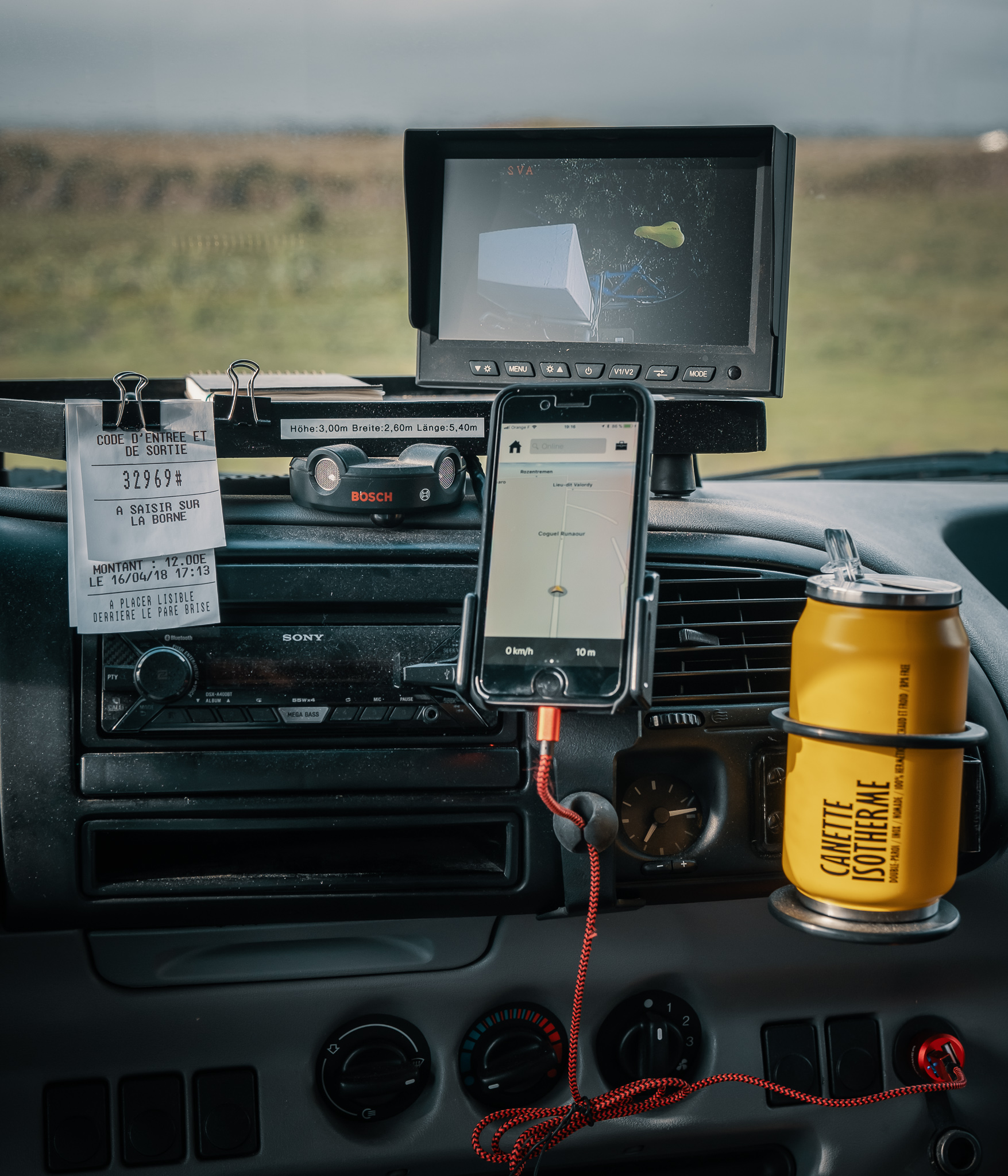
In order not to always have to convert the bed, I mainly use the swiveling passenger seat as a seating area and can put everything from computers to beer on the specially mounted folding table. And because of the large sliding door, I also sit almost as if right in the nature.

The living area is also the bedroom. The conversion takes less than 5 minutes. Lower the table top, rearrange the cushions, done.
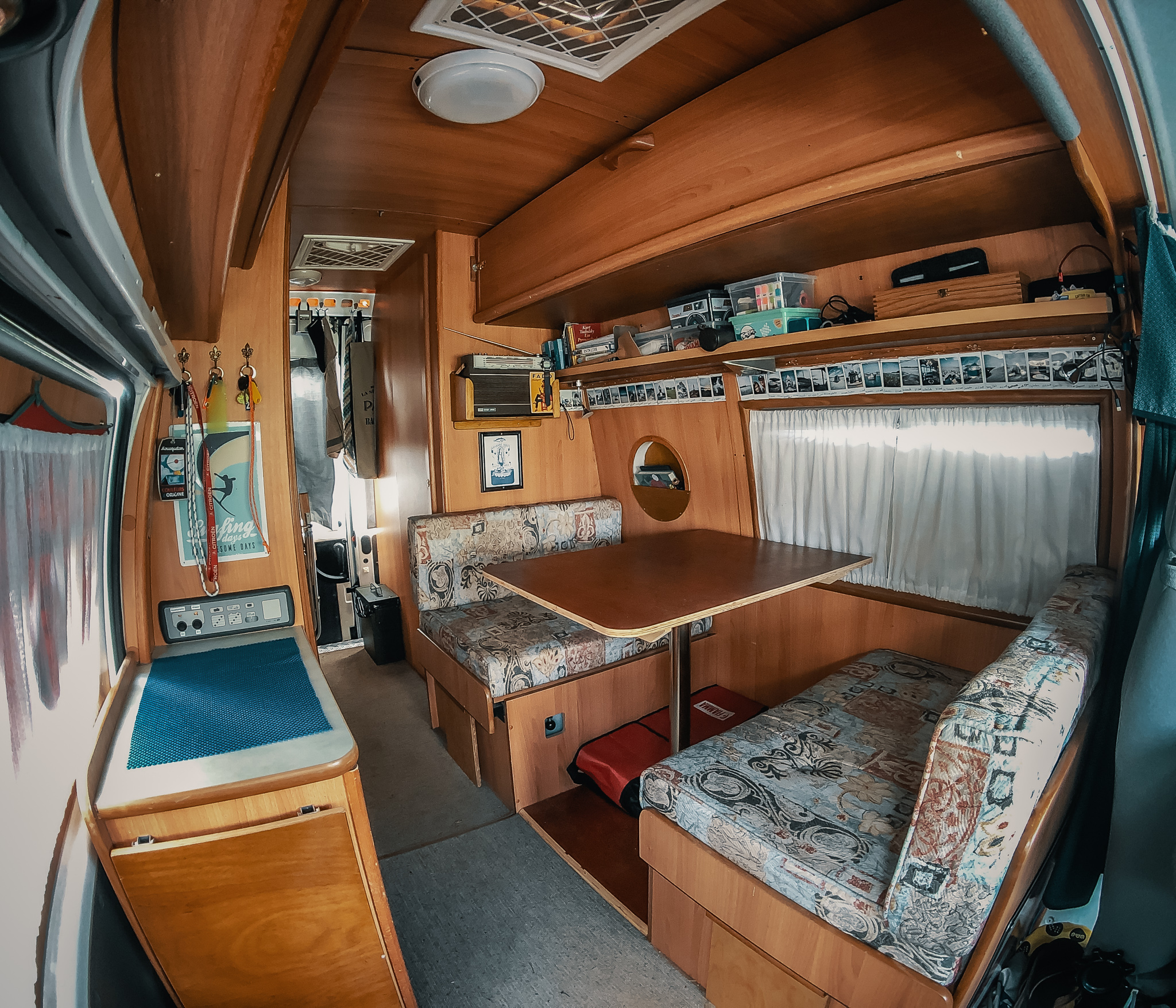
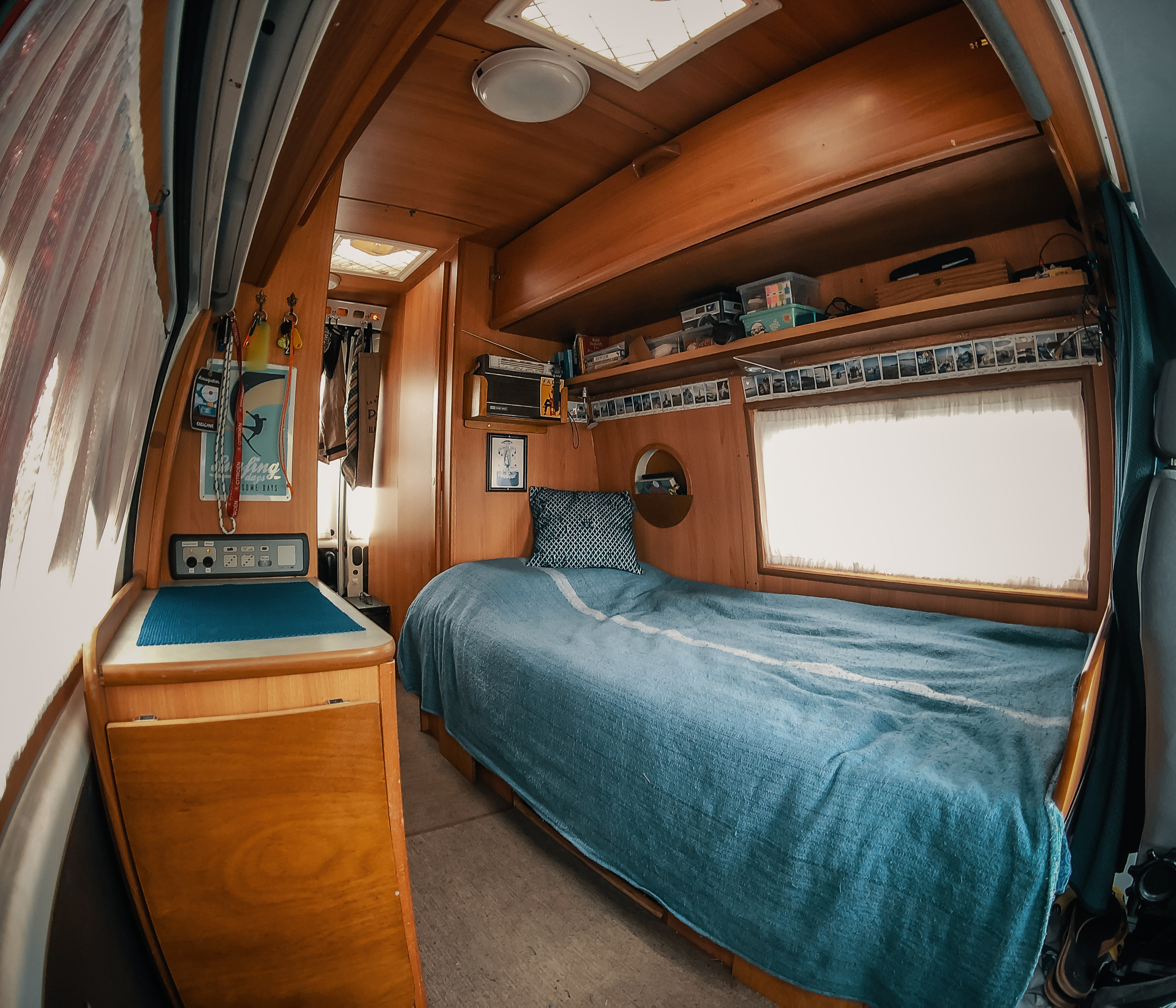
As a sound station, I positioned a vintage ITT Touring portable radio in the center and connected a small external Bluetooth receiver to the line-in input. So I can enjoy the music from the smartphone with a rich sound.
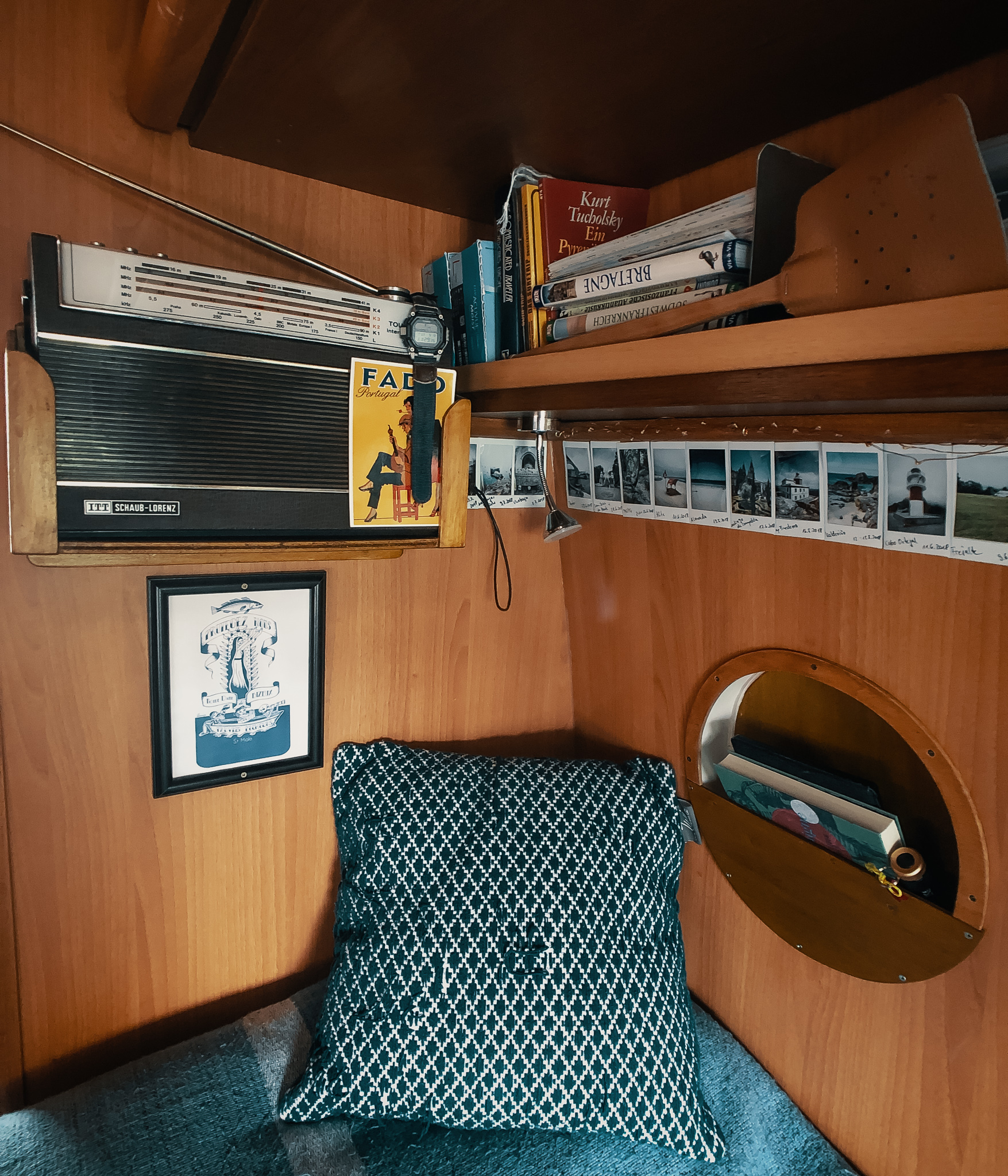
Speaking of enjoyment. There is a stationary hand filter in the kitchen for brewing coffee. So I can brew freshly ground coffee without always having to fiddle with the individual parts and it has the advantage that I can dispose of the filter together with the coffee grounds in one go.
The kitchenette also contains the refrigerator, which runs on gas or electricity.
Opposite the kitchenette is the separate bathroom with toilet and sink. And there is also a boiler that provides gas-powered hot water if required.
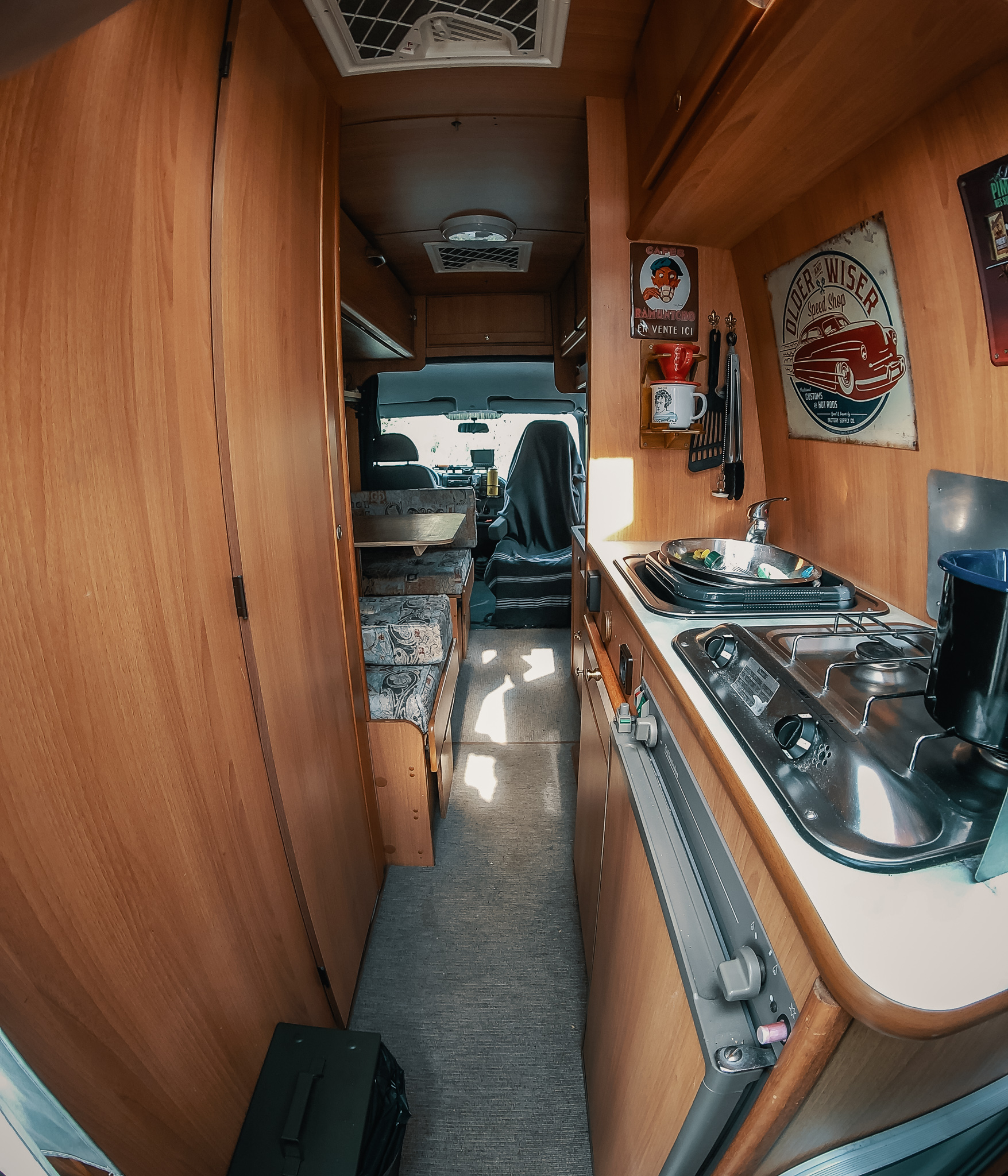
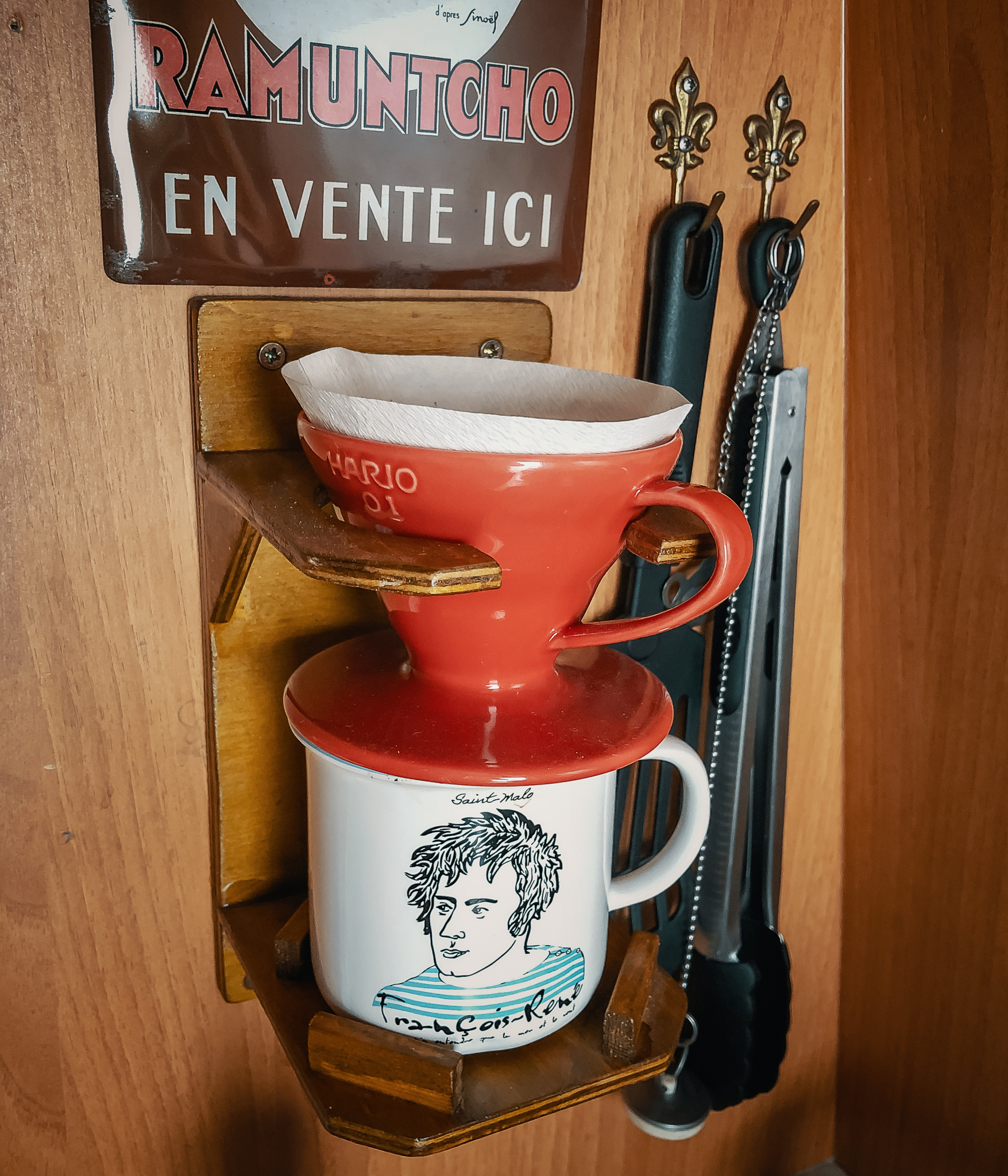
The power supply of all devices is designed for the supply with 12V car plug or via USB connections. The electricity is provided by its own on-board battery. This in turn is continuously charged by a 70 W solar system. So far, this set-up has been enough to use and charge smartphones, laptops, power banks, camera batteries, interior lighting, etc., in normal use without the board battery running flat.
The equipment also includes many little helpers for a carefree journey.

For the external power supply I have two pieces of 10m / 2.5 sqmm cables with thick insulation in the eye-catching color yellow. So you can see the cables in deep grass or on dark ground and prevent one or the other stumbling. By dividing it in two, I can easily change the length to the circumstances and don't always have to fiddle with the 20 m and stow a thick lump of cable. The cables have the standard Schuko connections. The short adapters have the blue EEC connectors as usual on campsites. So I'm prepared for all combinations. The yellow "egg" protects the coupling for water.
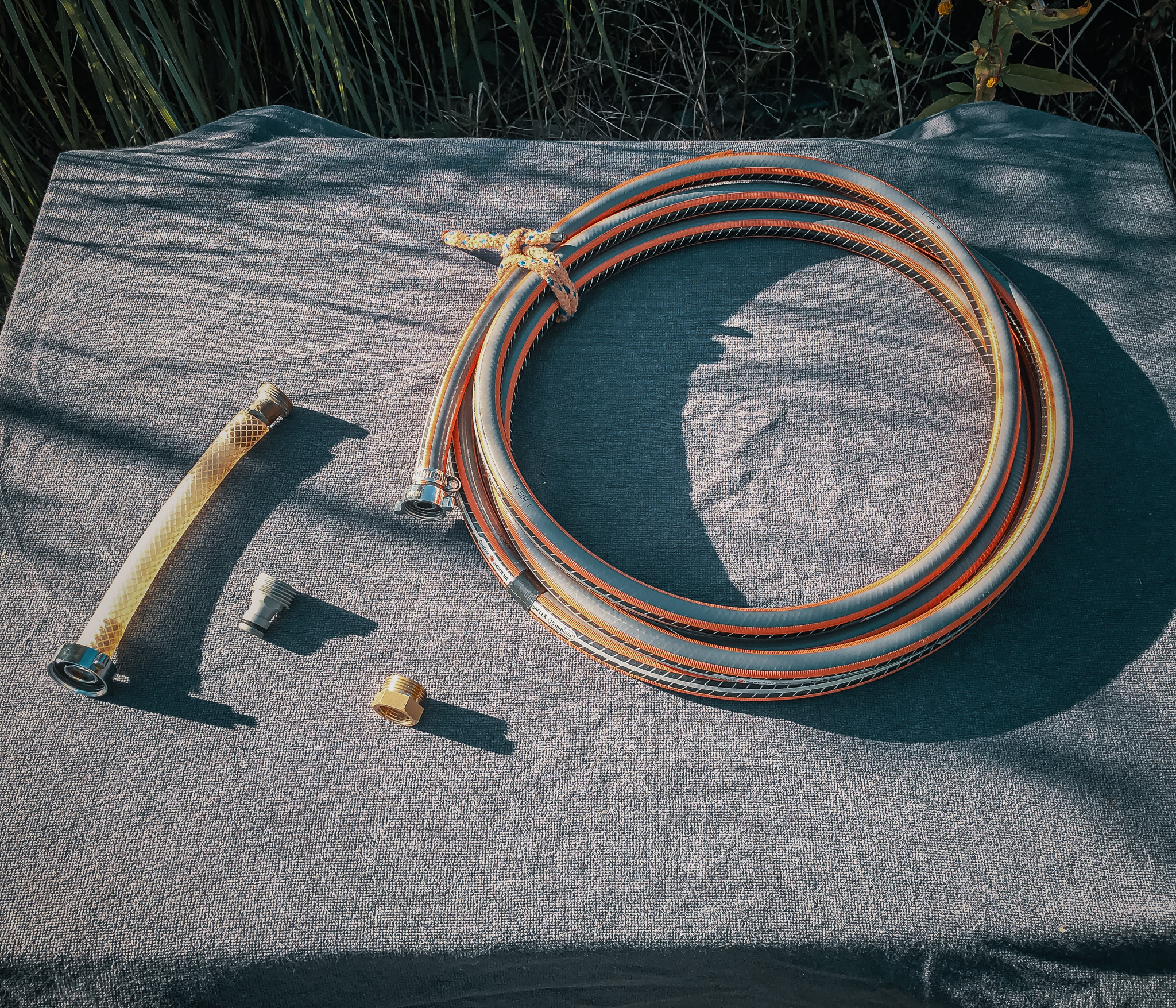
I also opted for the stable version of the water hose to prevent the hose from kinking and obstructing the water flow. I took 10 m Gardena HighFlex 15mm hose and installed a 3/4 inch connection. In order to be prepared for eventualities here, I have adapters for 3/4 inch to 1 inch faucet, 3/4 inch to 1/2 inch faucet and 3/4 inch to Gardena connection. And I used all possible variants.
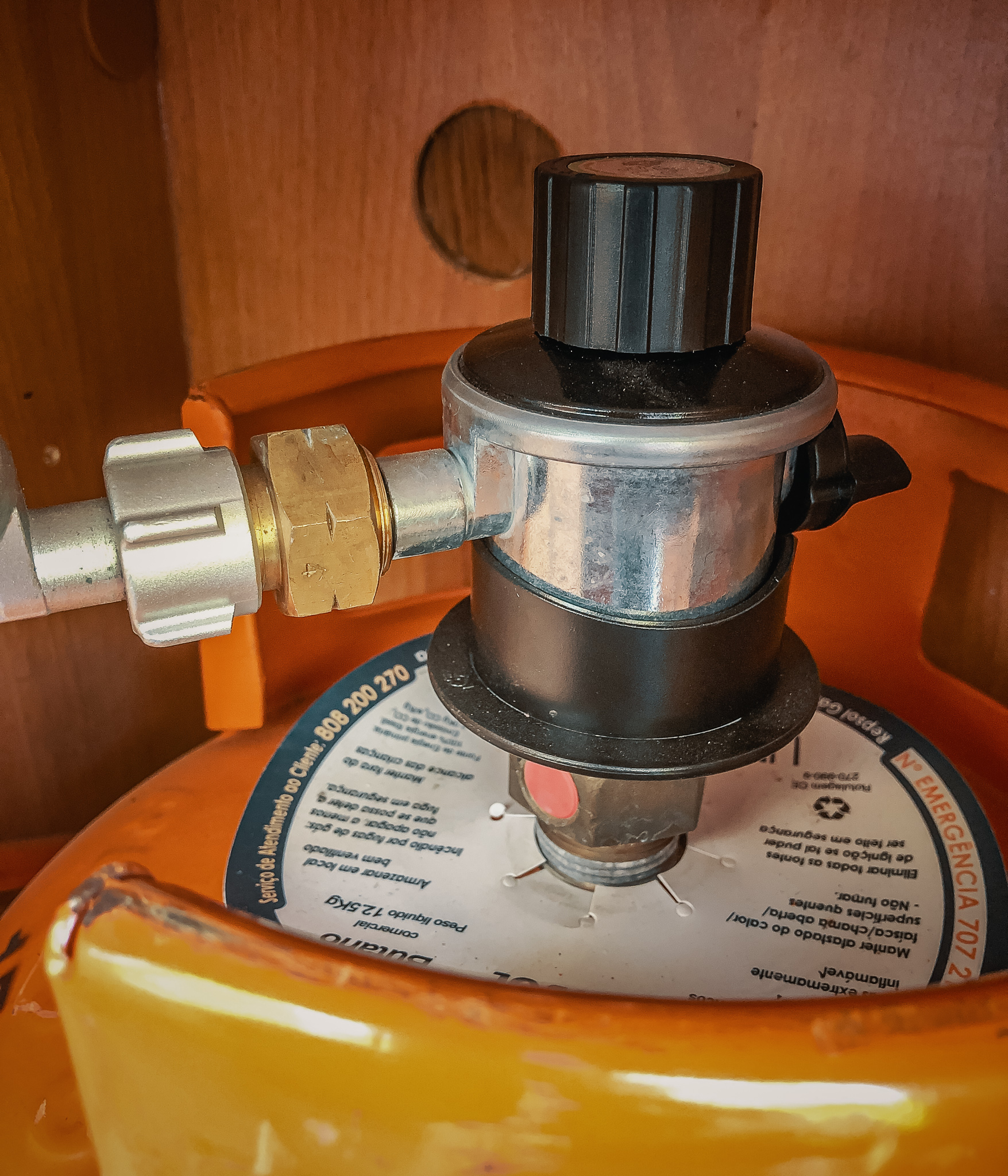
In the picture you can see three connections for gas bottles in use together. First the German connection at the gas regulator. Then the brass adapter (Euro bottle set No. 4) for connecting to French bottles and finally the clip-on adapter for the Spanish and Portuguese Repsol bottles. If you haven't already got this clip-on adapter in Germany, you can buy it in Spain in tool shops. Supermarkets do not carry these.
I found the filling level of the bottle more poorly then correctly with a Dometic Gaschecker pen. This is very difficult, especially with old bottles with an uneven surface. I have now bought a luggage scale and weigh the bottle and then subtract the empty weight of the bottle (is stamped on the bottles or can be found on the Internet at the bottle companies) from the weighed weight. The result is then the remaining amount of gas. Unfortunately to do this, I have to remove the bottle, but if in doubt, this is the more accurate method.
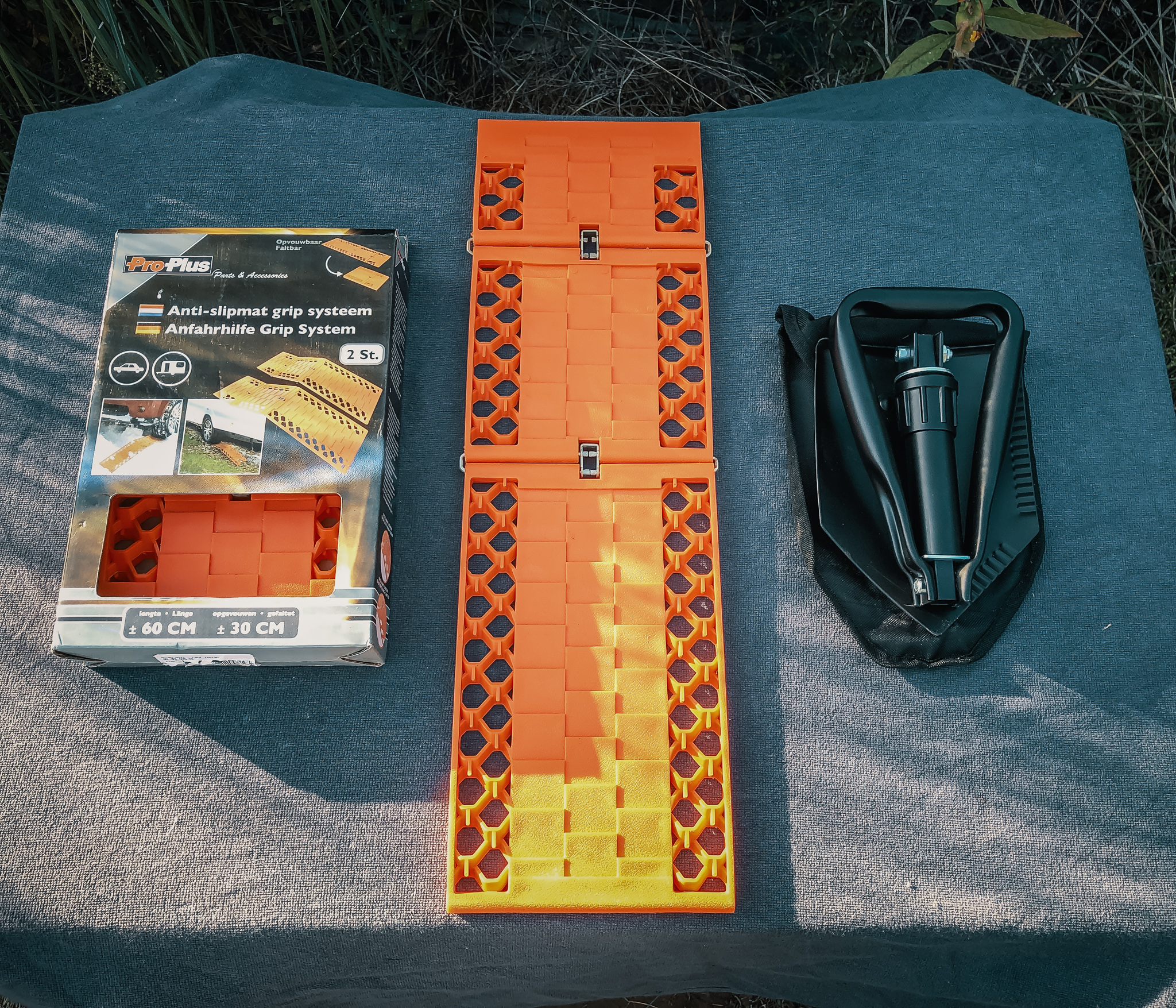
If you get stuck in the mud or loose sand, the starting aid with grip and a classic folding spade can be of great help.
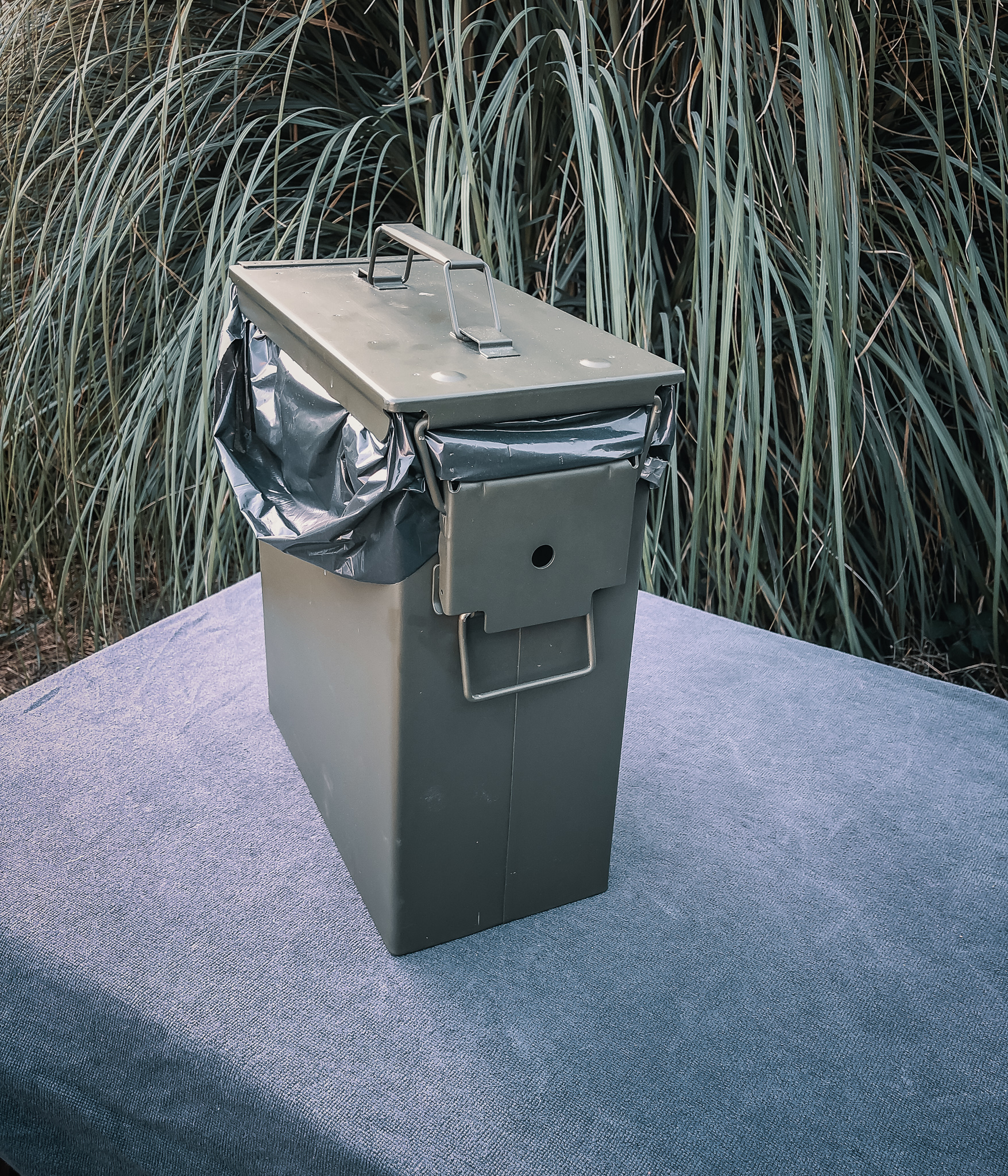
I used an ammunition box as a stable and, above all, firmly lockable garbage can. Its rectangular shape makes it easy to stow away and it is secured against tipping over while driving by luggage clamps.
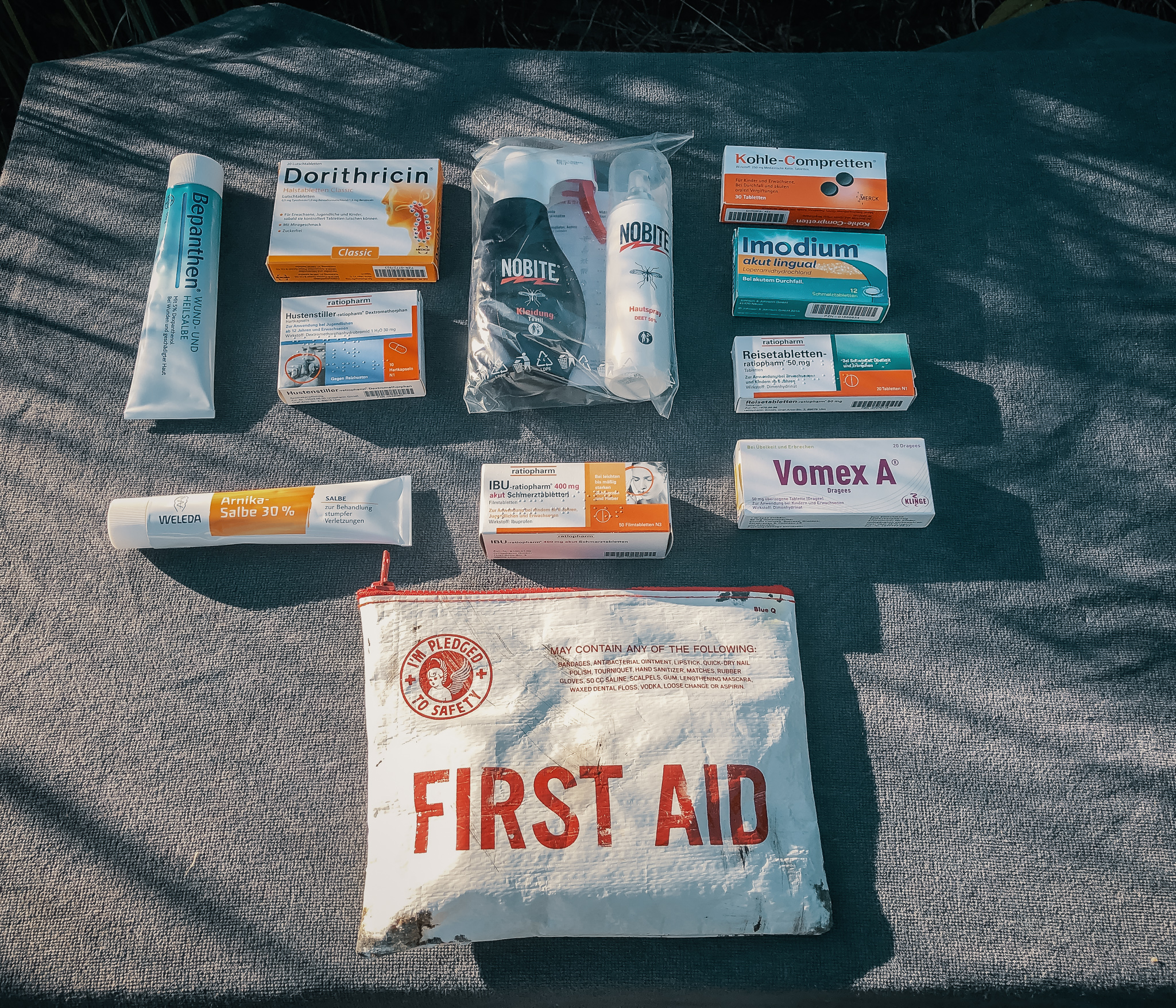
After doing some research on the Internet, I put together a first-aid kit based on the recommendations of the Foreign Office with a focus on treating diarrhea, nausea / vomiting, colds, coughs, sore throats, small wounds and pain relievers. The selected drugs can be seen in the photo. Fortunately, I didn't have to use anything apart from plasters and disinfectants. But the rule is better safe than sorry.
Cheers, Thomas